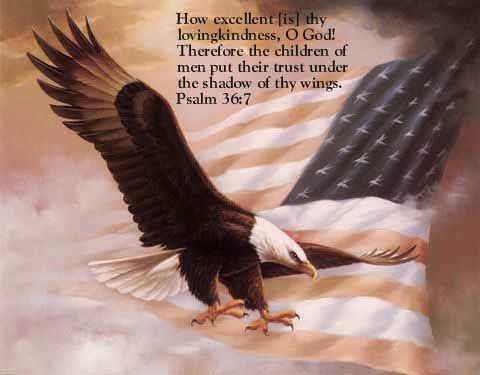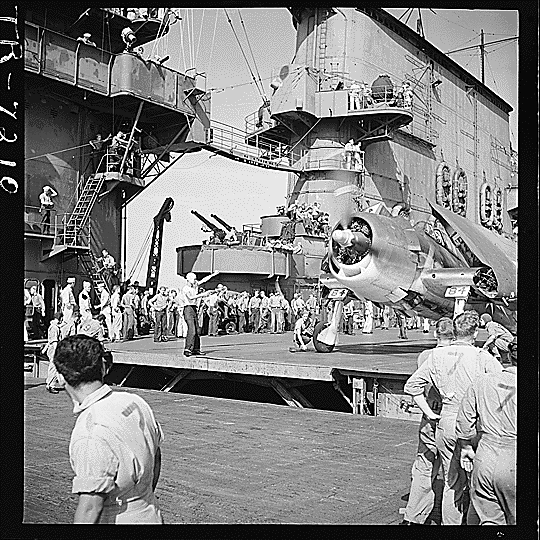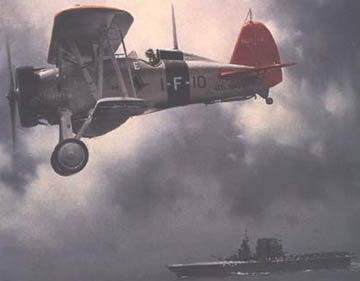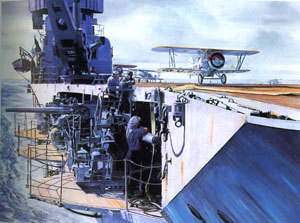|
Posted on 01/25/2004 5:13:07 AM PST by snippy_about_it
|
|
 are acknowledged, affirmed and commemorated.
|

| Our Mission: The FReeper Foxhole is dedicated to Veterans of our Nation's military forces and to others who are affected in their relationships with Veterans. In the FReeper Foxhole, Veterans or their family members should feel free to address their specific circumstances or whatever issues concern them in an atmosphere of peace, understanding, brotherhood and support. The FReeper Foxhole hopes to share with it's readers an open forum where we can learn about and discuss military history, military news and other topics of concern or interest to our readers be they Veteran's, Current Duty or anyone interested in what we have to offer. If the Foxhole makes someone appreciate, even a little, what others have sacrificed for us, then it has accomplished one of it's missions. We hope the Foxhole in some small way helps us to remember and honor those who came before us.
|
You're welcome. Just doin' my job as the resisdent Space Geek.
Yes. That's why you have me. ;-)
And we appreciate you for that. We're not rocket scientists (or engineers). ;-)
If you asked the average WW-2 history enthusiast to list out Americas famous carriers...USS Ranger would not pop up in conversation.
D.A.N.F.S. lists Ranger as awarded -2 Battle stars..not much for 6 yrs duty.
Yet..Ranger piled up the mileage...few carriers could match her logs.
She saw action in Atlantic waters...off the U.S. seaboard..where German submarines were entirley comfortable until mid /1943.
Many trips to Africa
Several actions in the Atlantic/Arctic region///many many months service with Englands Home Fleet out of Scapa Flow.
USS Isherwood sailed with Ranger and the Home fleet in August-October 43....There were serious concerns of meeting up with Tirpitz..Bismarks sister...plus other Kreigsmarine battle Crusiers.
The U.S. Navy stripped the U.S. northern Carrier/battlegroup of its new Fletcher DD's and sent them off to the Pacific...but plucky USS Ranger..she would stay on up north.
A more exstensive History of USS Ranger for the readers;
Seems unfair to be listed as 2 Battlestars for WW-2...USS Ranger was in harms way for long periods..and in difficult waters.


USS Saratoga (CV-3)
Underway at sea, circa 1942.
Planes on deck include five Grumman F4F fighters, six Douglas SBD scout bombers and one Grumman TBF torpedo plane.

USS Saratoga (CV-3)
Landing planes on 6 June 1935.
Official U.S. Navy Photograph, now in the collections of the National Archives.

USS Saratoga (CV-3)
Dressed with flags on Navy Day, 27 October 1932.
Official U.S. Navy Photograph, now in the collections of the National Archives.
USS Saratoga (CV-3) with deck load of SBD, F4F and TBD.
Circa late 1941 or early 1942.

USS Saratoga (CV-3) transiting Panama Canal

On board the USS Saratoga (CV-3). A groundman signals to the pilot of the F6F.

USS Saratoga (CV-3): An Illustrated History of the Legendary Aircraft Carrier 1927-1946
USS Saratoga Museum Foundation, Inc.

"Boeing F4B-3 Over USS Saratoga" depicts the first aircraft carrier to bear the name. Oil by R.G. Smith.

"Felix Leaves Sara" This 1989 oil by James Dietz shows an F4B-4 taking off from CV-3. Felix the Cat was the mascot of VF-6, a squadron which was aboard Saratoga from 1932-36.

Stunt Fliers of Squadron VF-1B
Photographed 16 August 1929, posed in front of a Boeing F2B-1 fighter plane. VF-1B was assigned to USS Saratoga (CV-3).

Kenneth Bratton USN, lifted from a TBF "Avenger" turret on USS Saratoga (CV-3) after a raid on Rabul. November 1943. (Lt Wayne Miller)

You know we at the Foxhole thank your Dad for his service. Was he part of the Ship's crew or the Air Group.


Sunk in A-bomb tests at Bikini Atoll. Today, the world's only diveable aircraft carrier wreck.
Saratoga, like so many of the ships at Bikini, survived the Able Blast, but succumbed to damage caused by the massive shock waves and water surge that Baker Blast created. Some 8 hours after Baker Blast Saratoga finally slipped between the waves. New York Times correspondent Hanson W. Baldwin wrote this epitaph as he watched Saratoga sink slowly beneath Bikini's lagoon: "There were many who had served her in the observing fleet and they fought with her through the long hot hours as the sun mounted. Outside the reef...the observing ships cruised, while the Sara slowly died. There were scores who wanted to save her - and perhaps she might have been saved, had there been a crew aboard. But she died a lonely death, with no man upon the decks once teaming with life, with pumps idle and boilers dead. From three o'clock on she sank fast, her buoyancy gone, as the fleet kept the death watch for a 'fighting lady'. The Sara settled - the air soughing from her compartments like the breath from exhausted lungs. At 3:45 pm the starboard aft corner of her flight deck was awash; then the loud speakers blared: 'The water is up to her island now; the bow is high in the air.' She died like a queen - proudly. The bow slowly reared high; the stern sank deep, and, as if striving for immortality, the Sara lifted her white numeral 3 high into the sun before her bow slipped slowly under. Her last minutes were slow and tortured; she fought and would not sink, but slowly the 3 was engulfed by the reaching waters, the tip of her mast was the last bit of Sara seen by man." Unless, of course, you are a diver fortunate enough to be visiting Bikini Atoll!
Like all the warships at Bikini, Saratoga was "battle ready" - as well as primed munitions and a complement of bunker & aviation fuel, she carried 3 of the US Navy's Helldiver single-engine dive bombers and an Avenger single-engine torpedo bomber, located in the main hangers, in a line just aft of the forward elevator. 500lb bombs are also located in the same area. Eight paired 38 calibre guns in four houses - two forward and two aft; 12 single 38 calibre guns & 24 Bofors antiaircraft guns of which six have been located; and 52 Oerlikon 20 mm anti-aircraft guns of which five have been located bristled along the edges of the flight deck. Twelve Mk 51 gun fire-control directors can be found next to the anti-aircraft guns. Forward of the bridge can be found one of her large twin 5-inch turrets, the other having been removed prior to the Bikini tests.
Saratoga is the shallowest dive at Bikini. She sits upright on the seabed 190ft below the surface, but her bridge superstructure can be clearly seen from the surface, being only 40ft down. Spiralling down the bridge you arrive at the flight deck in about 90ft. The gaping maws that are the main elevators lead down to the hanger deck at about 130ft.
Because of her vastness Saratoga is worthy at least 4 during a week at Bikini. The first "check-out" dive at Bikini (some check-out dive!) is on Saratoga - a 90ft dive to the flight deck and an inspection of the bridge where a full complement of instrumentation can be found, including dials, telegraph and voice tubes.
Disclaimer: Opinions posted on Free Republic are those of the individual posters and do not necessarily represent the opinion of Free Republic or its management. All materials posted herein are protected by copyright law and the exemption for fair use of copyrighted works.